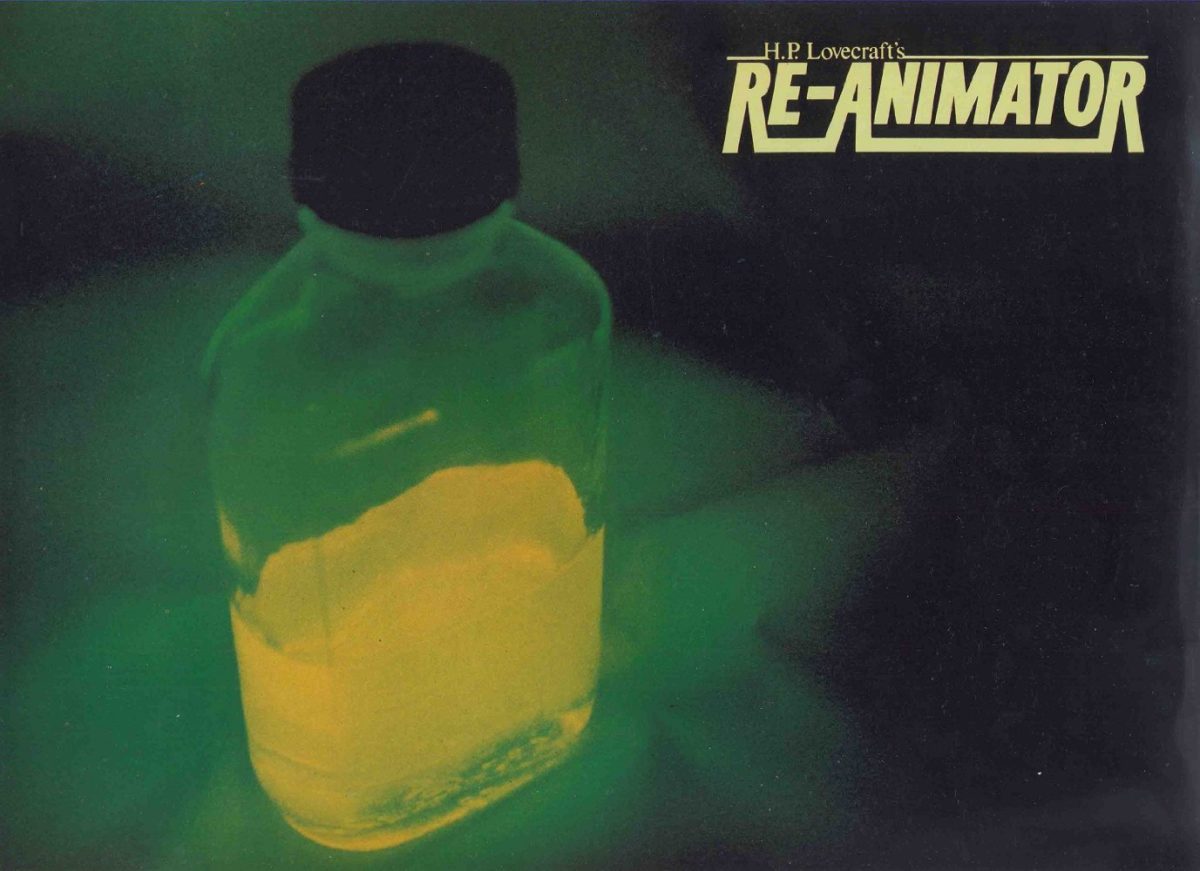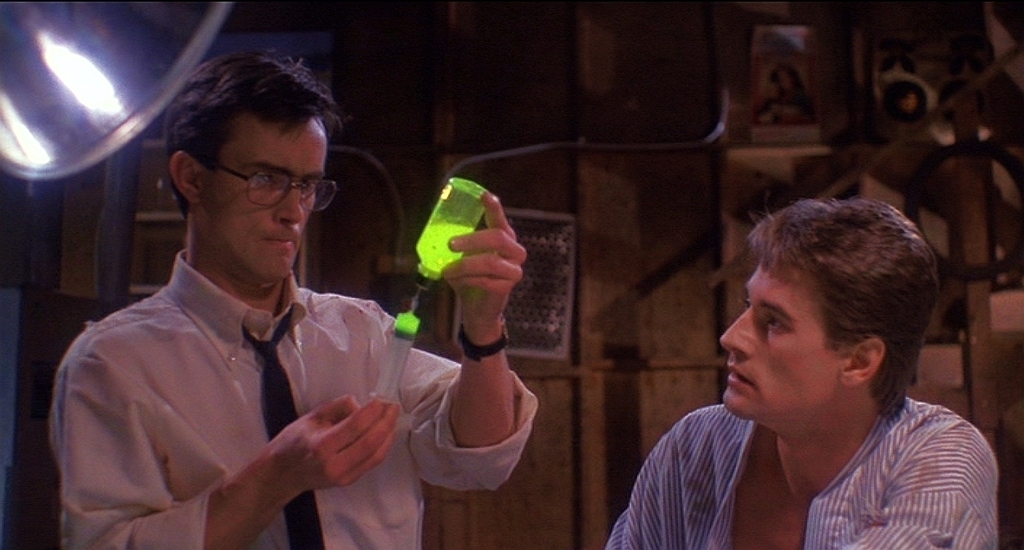Of all the holidays celebrated worldwide, no single day is loved by the Substream staff more than Halloween. With October’s arrival, the time has finally come to begin rolling out a slew of special features we have prepared in celebration of our favorite day.
31 Days Of Halloween is a recurring column that will run throughout the month of October. The goal of this series is to supply every Substream reader with a daily horror (or Halloween-themed) movie recommendation that is guaranteed to amplify your All Hallows’ Eve festivities. We’ll be watching every film the day it’s featured, and we hope you will follow along at home. Reader, beware, you’re in for a… spooky good time!

Day 2: Reanimator (1985)
Stuart Gordon is known for plenty of sexuality and extreme gore and his first film, Re-Animator, set the tone admirably for what his career would become. The original story, Herbert West: Reanimator is one of H.P. Lovecraft’s more straightforward works and originally Gordon attempted to get funding for a period piece that would hue closely to the original story, but this fell through in the early stages. He decided to instead create a more avant-garde and unique interpretation that would allow for a much cheaper shoot.
The film revolves around Herbert West (Jeffrey Combs), the eponymous Reanimator; Dan Cane (Bruce Abbott), who eventually becomes his semi-willing assistant; and Meg Halsey (Barbara Crampton), Dan’s girlfriend and daughter to the dean of the medical school that Dan and Herbert attend. Re-Animator opens with West’s first attempt at reanimating a corpse. The blood and gore and great special effects make it clear what the viewer is in for. When West is evicted from his school he ends up becoming Dan’s roommate much to the distress of Meg, who doesn’t trust West from the beginning. Her suspicions are confirmed when West brings Dan’s dead cat back to life in one of the more hilarious and over the top scenes.
Meg is repulsed by their experiments, but Dan becomes enthralled with West’s theories and agrees to assist him in finding human corpses to further his work. Their first experiment goes predictably awry when the reanimated corpse wakes up enraged and ends up killing Meg’s father. Their solution to the problem is worse than the problem itself and the story devolves into a desperate climactic scene that includes a morgue full of naked, reanimated corpses, an oversized set of intestines, and a horrific bloodbath that ends poorly for everyone involved.
On first viewing, the film seems a simplistic mess of tawdry gore and nudity created out of some horror fan’s playbook, but Stuart Gordon’s background in experimental theater and his experience with years of creating and directing new plays makes this unlikely. Upon re-watching it becomes clear that more is going on under the surface. Despite the fact that Meg spends the end of the story as a hapless victim, her character is one of the most important as she provides a counterpoint to Herbert West’s maniacal devotion to instilling unnatural life in the dead.
Meg is portrayed as a pure figure, but the movie never stuffs her into the vestal virgin box. Gordon doesn’t portray her sexuality as negative or something for which she should be punished, and even though there are sex scenes and she is often nude, the camera doesn’t take on a salacious tone. He discards the Madonna/Whore dichotomy that is so often present in horror films—especially those of the 80’s—in favor of a character who is both sexual and worthy of respect. All the men except West attempt to control her for their own reasons, but despite this treatment, Meg does not give in, refusing to be silenced by any of them. She relentlessly attempts to convince Dan of the danger he is in by continuing to assist West, but he rebuffs her to his detriment.
While Herbert West proclaims his desire to bring life back to the dead, he seems to hold no sense of its value. Once he discovers that he can reanimate a corpse he does so with flippant disregard for common decency or consideration. When Dan denies the abilities of his reanimating solution after the incident with the cat, Herbert brings the poor animal’s twisted form back to life again merely to prove a point. He has no compunction about killing to defend the rights to his work, nor about bringing people back to life just to see if he can. The callous disregard that Herbert West displays is the cold, calculated reason of a madman who cares only for his experiments.
Dan Cane is caught in the middle, with Herbert West on one side and Meg on the other. When we meet Dan, he is desperately attempting to save a patient who has flatlined; when he fails, his dedication to saving life becomes an obsession, and he is unable to see the costs of these foul experiments. This only leads to continuing tragedy so that in the end Dan’s obsession costs him everything. While Cane initially seems meant to be an avatar for the viewer, he ends up making all the wrong choices and showing us what happens when all perspective is lost.
With its combination of gross-out horror, ridiculous comedy, over the top scenes, and subtle undercurrents, Re-Animator manages to be many things at once. The fact that it was also done on a small budget with a first-time director and a mostly unknown cast makes it remarkable. The secret to the film is that every scene is taken utterly seriously by everyone involved and that the three main actors maintain a rigorous sincerity. Upon release Re-Animator was met with confusion, delight, and disgust by the movie-going public, even as is it was generally positively received by critics. Yet it’s survived and is, to this day, deservedly considered a classic of cult cinema.
https://www.youtube.com/watch?v=NCGGG_NvE4g














